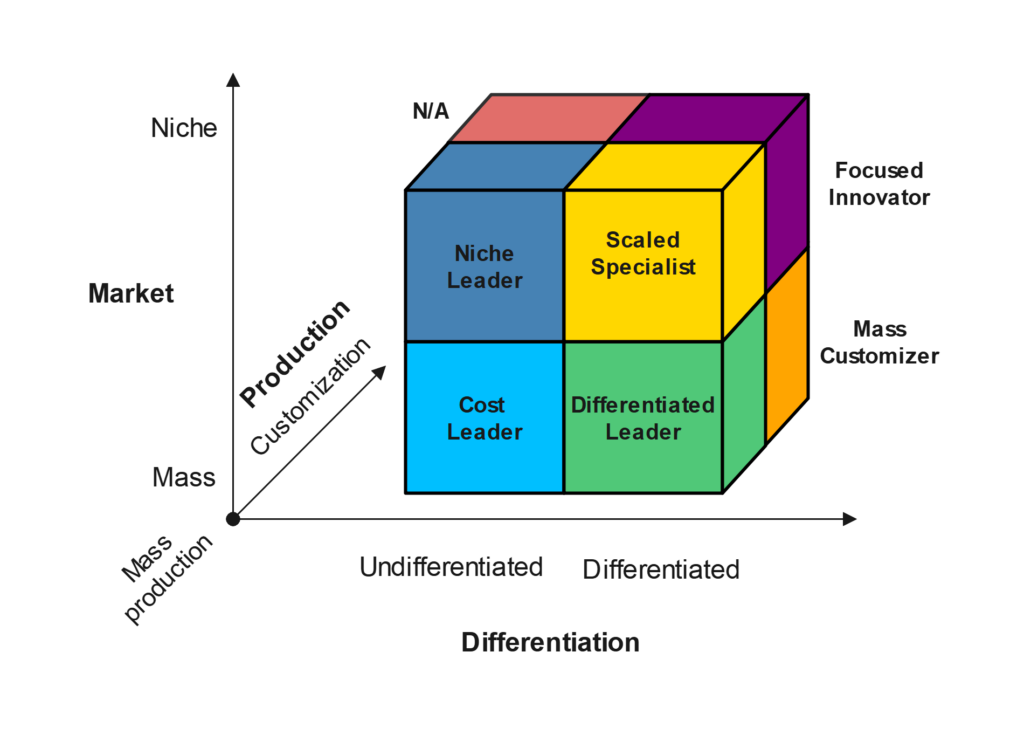
The Strategic Positioning Cube is a modern framework that maps business strategies into a 3D space. It helps organizations position themselves by combining three essential dimensions: differentiation level, type of production, and market targeting.
The model identifies eight strategic positions along three axes: differentiation, production logic, and market scope.

Represents how distinct or generic a company’s product or service is perceived in the market.
Examples:
Generic: bottled water, basic furniture
Differentiated: Apple devices, luxury watches, ergonomic office chairs
Captures whether the business model is based on standardized mass production or customized, tailored output.
Examples / Analogy:
Mass Production: IKEA, McDonald’s
Customization: Tailored suits, artisan coffee, SaaS onboarding workflows
Describes whether the firm targets a narrow niche or the broad mainstream market.
Examples:
“Niche: GoPro, Leica, specialized SaaS tools
Mass: Coca-Cola, Amazon, generic smartphones.
The 6 Strategic Positions
Each position within the Strategic Positioning Cube reflects a unique strategic archetype formed by the interaction of three core dimensions: differentiation, production logic, and market scope. The model goes beyond traditional 2D grids by mapping hybrid and evolving strategies in 3D.
Competes on price with mass production and low differentiation
Serves a narrow market with high value and efficiency.
Combines customization with operational scale.
Premium positioning across large markets.
Serves a niche with unique or disruptive products
Delivers individualized products at scale.
Why to use the Strategic Positioning Cube
🟧 Simplicity Meets Depth
Quick to grasp, but deep enough for advanced strategic planning.
🟧Multi-Dimensional Analysis
Maps strategy in 3D, allowing layered thinking and hybrid positioning.
🟧Better Than Generic Models
Goes beyond SWOT or Porter’s Matrix with richer positioning logic.
🟧Modern Business Fit
Designed for startups, hybrids, and modern digital-first businesses.
🟧Visual Thinking Tool
Makes abstract strategy more tangible and easier to explain to teams or clients.
